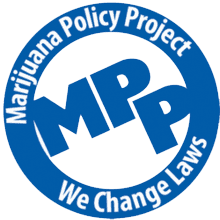Condition Report: Cancer
August 19, 2019OVERVIEW
Cannabis’ current regulation in the United States, as well as around the world, limits the vast research needed to educate the public about its advantages. These findings sought to provide medical evidence of cannabis’ benefits and risks in cancer, respiratory disease, immunity, therapeutics effects, psychosocial, mental health, substance abuse, and others to the audience throughout 2018. Even though the evidence for cannabis usage is still elusive, the World Health Organization has urged for nations to remove cannabis from Schedule IV from its list of drug scheduling, which in turn will allow the protection for researchers and advocates interested in conducting additional studies to understand its benefits.
PREFACE
The consumption of cannabis and cannabinoids for medical purposes, as well as for recreational use, is still considered a controversial topic in the time of writing since limited research has not been able to provide a complete scope of results from studies to form any conclusive results about the benefits or risks of cannabis use.
Cannabis’ current regulation under Schedule I, from drug scheduling in the United States, limits the vast research needed to educate the public about its advantages. Needless to say, 34% of Americans support cannabis and its derived products to remain illegal, thus preventing further development and legalization (Hartig & Geiger, 2018).
In 2017, The National Academies of Sciences Engineering Medicine (NAS) published a lengthy report with evidence from several examinations conducted from 2011 through 2017. These findings sought to provide medical evidence of cannabis’ benefits and risks in cancer, respiratory disease, immunity, therapeutics effects, psychosocial, mental health, substance abuse, and others. However, due to the mentioned limitations, the National Academies’ report (2017) concluded that cannabis’ effects are still vague and recommend further investigation to provide more conclusive evidence.
This work of literature ought to be considered a complementary piece – extending the report’s findings – and provide the reader with an unbiased, comprehensive body of evidence regarding results from research and case studies throughout 2018, and the implications of much-needed analysis to benefit the consumer.
Even though the evidence for cannabis usage is still elusive, the World Health Organization has urged for nations to remove cannabis from Schedule IV from their list of drug scheduling, which in turn will allow the protection for researchers and advocates interested in conducting additional studies to understand its advantages (Angell, 2019).
Canneconomy.com and its affiliates aim to provide general information about cannabis consumption in the hopes for policymakers, users, researchers, and the general public to make an informed decision about cannabis and its derived products. Thus, seeking the research needed for a better understanding of marijuana as it takes on the medical field.
BACKGROUND
The cannabis policy landscape has undergone substantial changes over the past 40 years, including the legalization of cannabis for medical use in 28 states in the United States (NASEM, 2017). These policy changes have significantly changed patterns of cannabis use and perceived levels of risk.
Despite extensive interventions at the state level and the rapid increase in cannabis use for both medical and recreational purposes, conclusive evidence remains elusive about the short-and long-term health effects of cannabis use. Limited scientific research has resulted in a lack of understanding in cannabis use’s health implications, which is a significant public health concern. Thus, there is not an official guide to instruct consumers on the dosage and time of administration to use cannabis safely and effectively when treating medical conditions.
The Institute of Medicine (IMO) has published several consensuses reports on cannabis health effects and transformed the industry significantly with its published report titled Marijuana and Medicine: Assessing the Science Base in 1999. Since its publication, the scientific literature on cannabis use has grown substantially and led the National Academies of Sciences, Engineering, and Medicine to publish a lengthy report in 2017 with evidence from several examinations conducted from 2011 through 2017. These findings sought to provide medical evidence of cannabis’ benefits and risks in cancer, respiratory disease, immunity, therapeutics effects, psychosocial, mental health, substance abuse, and others. The report concluded that cannabis’ effects are still vague and recommend further investigation to provide more definitive evidence.
Simultaneously, marihuana is cataloged under Schedule IV of the Drug Convection Treaty of 1961 from the World Health Organization (WHO). However, recent discoveries presented to the WHO’s committee did not indicate that cannabis plant and cannabis resin were particularly liable to produce ill effects similar to other substances in Schedule IV. The Committee also recognized that cannabis preparations such as in the forms of oils and infused foods are chemically formulated in a way that they are not likely to be abused and there is no evidence of actual abuse to justify the current level of control associated with Schedule I in the United States. The organization concluded that the inclusion of cannabis and cannabis resin in Schedule IV is not consistent with the criteria for a drug to be placed in Schedule IV. Thus, the WHO has urged for cannabis and its key components to be rescheduled under international drug treaties. WHO’s petition aims for whole-plant marijuana, as well as cannabis resin, to be removed from the treaty’s Schedule IV (Adhanom, 2018).
If the proposal were to be adopted by nations’ members, it would confirm the belief that the world’s governing bodies have been wrong about cannabis’s risks and therapeutic benefits for years. More importantly, the international agreement would protect future research in the medical field and attempt to eradicate issues such as the opioid crisis, and others.
During this pivotal time, the author of this work embarked to research extensively for credible databases including PubMed, Science Direct, Elsevier, JSTOR, and others to conduct a systematic review of the findings throughout 2018 that expand the National Academies’ report since 2017 and provide the audience with facts of current medical evidence to outline the benefits and risks of cannabis use.
THERAPEUTIC FINDINGS: CANCER
Cancer is a significant public health problem as the leading cause of death (Bottomley et al., 2018). Research demonstrates that palliative care and its many elements contribute to the health and wellbeing of cancer patients and the family (Seibert et al., 2018). The American Society of Clinical Oncology recommends palliative care for all patients with advanced cancer since evidence has emerged that incorporating palliative care into a patient’s standard cancer treatment can enhance their quality of life and mood and prolong survival. Recent controlled trials aimed at alleviating pain and nausea in cancer patients with cannabis products have shown promising evidence and might become a cornerstone for oncology.
Shin, Mitchell, Mannion, Smolyn, and Meghani (2018) conducted a systematic review of eight studies that reviewed the effect of cannabinoid THC. Five studies from the report found that THC was more effective than placebo, whereas one study found that THC was more effective in American patients than placebo but ineffective in patients from other countries; two studies found that THC was no more effective than placebo. Ultimately, Shin et al. (2018) concluded that patients who smoke plant cannabis had a significant decrease in chemotherapy symptoms.
On the other hand, Nabilone has been an effective cannabinoid agonist that is used to treat nausea and vomiting caused by acute chemotherapy (National Cancer Institute [NCI], 2018). Turcott et al. (2018) embarked on a double-blind clinical trial that entailed to describe the safety and effectiveness of nabilone in pediatric patients undergoing acute chemotherapy. The acute phase was defined as beginning with the first dose of chemotherapy and continuing up to 24 hours after the last chemotherapy block dose was given. One hundred and ten patients were identified as eligible (median age: 14 years old) and were given nabilone in addition to CINV prophylaxis 5-HT3 antagonist. Turcott et al. reported that 37 percent of the children experienced adverse effects such as sedation, dizziness, and euphoria, which prompted nabilone to be discontinued in 10 patients. The trial concluded that in children who received nabilone as part of their antiemetic regimen, acute CIV control was reduced, thus future work should focus on implementing only CINV prophylaxis and adhering to treatment within guidelines (Turcott et al., 2018).
Glioblastoma (GBM), the most common and aggressive brain tumor, causes the highest number of deaths worldwide; it is a highly vascularized, infiltrative tumor (Erices, Torres, Niechi, Bernales and Quezada, 2018). Regardless, cannabinoids, terpenes, and curcumin are among the compounds with more evidence that suggests their clinical use, as many have been shown to have a significant effect in decreasing the progress of glioblastoma. This is through known mechanisms such as chemo-sensitization or reduced migration and invasion of cells (Erices et al., 2018).
The recent evidence from Erices, Torres, Niechi, Bernales and Quezada (2018) observed that in 92 percent of the 119 cases with solid tumors, there was a significant decrease in circulating tumor cells and in other cases a decrease in tumor size as shown by repeated scans. No side effects of any kind were observed with the use of synthetic cannabidiol of pharmaceutical grade. Therefore this team concluded that synthetic cannabidiol of pharmaceutical grade is a candidate for the treatment of patients with breast cancer and GBM (Erices et al., 2018).
Previous studies (Flor-Henry and Shapiro, 2018) on the expression of CB1 and CB2 classical cannabinoid receptors suggest that these may provide suitable diagnostic or prognostic biomarkers for Endometrial Cancer (EC), but these observations have been contradicted in a trial carried in Utah, United States (Blanchard, Vahrenkamp, Berrett, Arnesen and Gertz, 2018). In endometrial biopsies of women with or without EC, Blanchard et al. (2018) used qRT-PCR and immunohistochemistry (IHC) for CB1 and CB2 receptors and found that transcript levels for both CB1 and CB2 decreased significantly by 90 and 80 percent respectively in EC patients. This data suggests that the loss of both types of CB receptors is potentially involved in EC development or progression and that the expression of CB1 and CB2 receptors could serve as useful histological markers and therapeutic goals in EC treatment or prevention (Blanchard et al., 2018).







